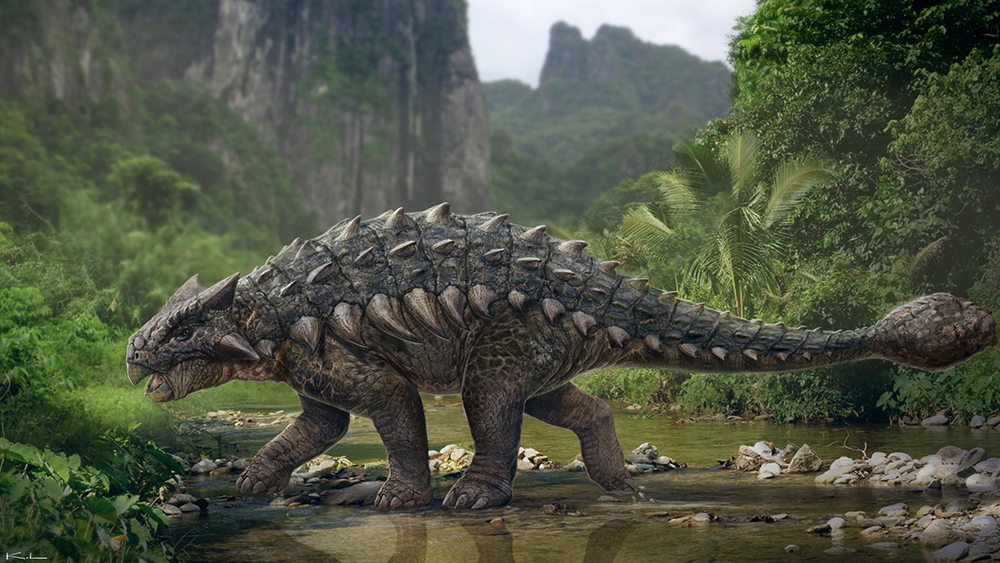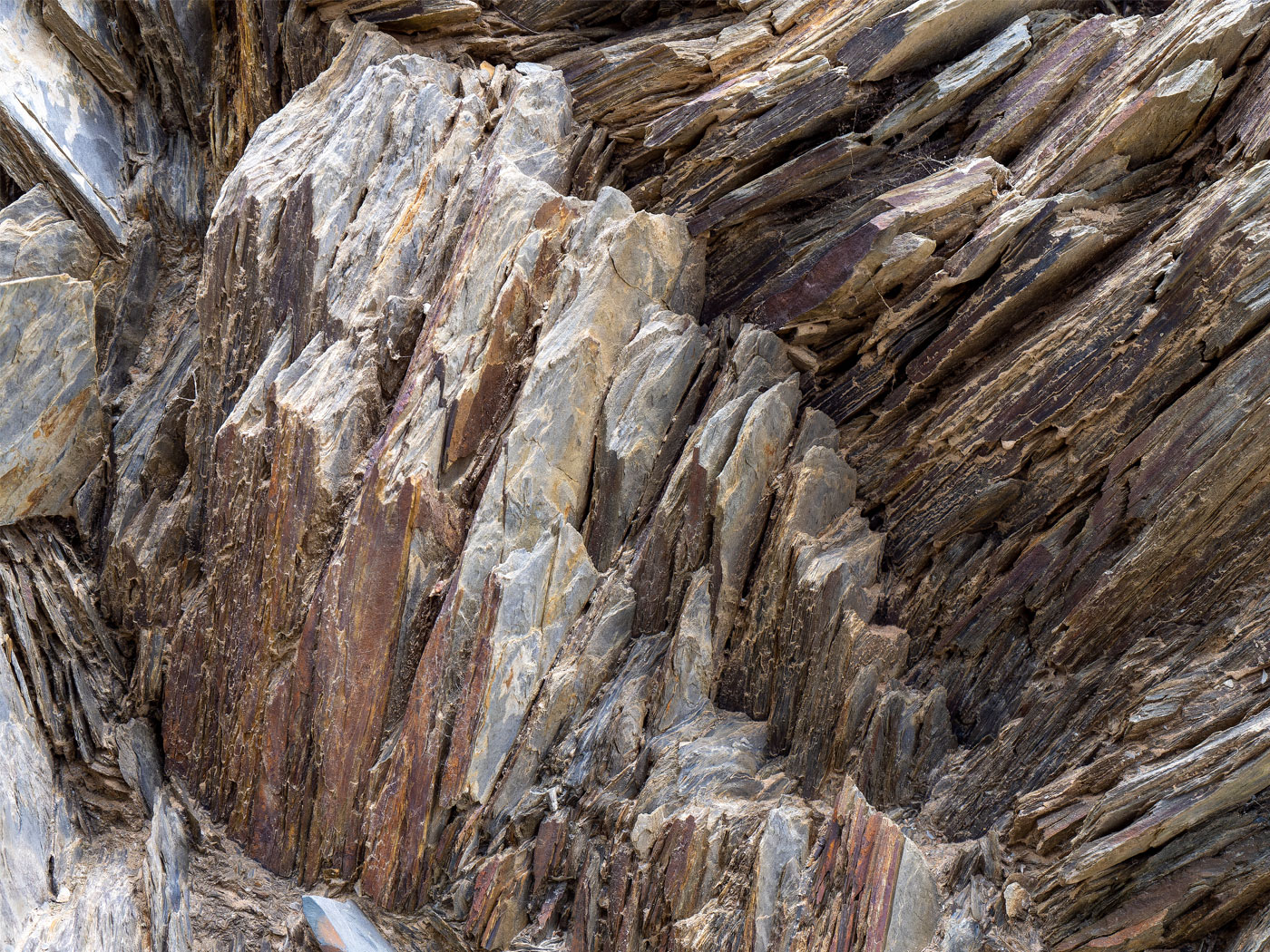A new research paper claims to have solved the mystery of why most ankylosaur dinosaur fossils are found upside down.1 Lead author Dr. Jordan Mallon, from the Canadian Museum of Nature in Ottawa, Ontario, explains, “Textbooks have touted that ankylosaur fossils are usually found upside down, but no one has gone back and checked the records to make sure that’s the case.”2
Mallon collaborated with academics from the Royal Tyrrell Museum of Palaeontology in Alberta and armadillo scholars from Valdosta State University in Georgia. Their primary goal was to investigate the widely held view that most ankylosaurs were buried belly-up. They also wanted to test some proposed explanations for this apparent phenomenon, including whether they could have bloated and rolled over, as some have suggested happen to dead armadillos.3
“One idea was that ankylosaurs were simply clumsy, tripping over themselves or rolling down hills and ending up dying that way,” said Jordan.2 Another idea suggested that carnivores may have turned them over to eat their soft underbellies.
To test these hypotheses, the team examined 36 ankylosaur specimens from across the province of Alberta and found that 26 (over 70%) were deposited upside-down.1 They carefully examined the bones for bite marks and reported only 1 out of 32 ankylosaurs (specimens that had a sufficient number of bone fossils to study bite marks) had any evidence of carnivore activity—effectively ruling out that possibility.
In addition, they studied 174 dead armadillos in the field, finding no correlation between bloating and upside-down posture. In fact, only 6 of 22 dead armadillos were determined to have bloated and rolled over. And some of these actually rolled onto their stomachs.
Finally, the scientists used computer models that allowed the scientists to test the “bloat-and-float” concept, finding “strong statistical support for the dominance of upside-down occurrences, and favour a ‘bloat-and-float’ model to account for them. According to this model, ankylosaur carcasses became reworked into fluvial or marine settings where they bloat and overturn prior to their final deposition.”1
Many ankylosaur fossils...are commonly found in marine sediments, as are most of the dinosaur fossils found across Europe. ![]()
The authors also noted that many ankylosaur fossils, particularly the nodosaur variety, are commonly found in marine sediments,1 as are most of the dinosaur fossils found across Europe.4 Did virtually all these dinosaurs somehow happen to fall into rivers and float out to sea as many secular scientists claim? Did 26 of 36 carcasses casually flip upside-down in the water? Or is there a better explanation for these upside-down ankylosaurs?
The global Flood seems to provide the perfect answer to this global phenomenon. The floodwaters would have quickly inundated and drowned ankylosaurs. The dinosaurs would have floated along, most of them tumbling into an upside-down position, and then been deposited in sediments quickly enough to preserve their bones as fossils.
The Flood also better explains why so many dinosaur fossils are found in marine rocks and why marine fossils are commonly mixed with non-marine fossils, such as dinosaurs.5
The historical accuracy of the Flood account is too often ignored by secular science. ![]()
The historical accuracy of the Flood account is too often ignored by secular science. If they open their Bibles to the book of Genesis, they could better explain many of their seemingly baffling findings. There really is no mystery, because God tells us exactly what happened!
References
- Mallon, J. C. et al. 2018. A “bloat-and-float” taphonomic model best explains the upside-down preservation of ankylosaurs. Palaeogeography, Palaeoclimatology, Palaeoecology. 497: 117-127.
- Flipside of a dinosaur mystery: ‘Bloat-and-float’ explains belly-up ankylosaur fossils. PhysOrg. Posted on phys.org February 28, 2018, accessed March 9, 2018.
- Carpenter, K. 1984. Skeletal reconstructions and life restoration of Sauropelta (Ankylosauria: Nodosauridae) from the Cretaceous of North America. Canadian Journal of Earth Science. 21 (12): 1491-1498.
- Clarey, T. 2015. Dinosaurs in Marine Sediments: A Worldwide Phenomenon. Acts & Facts. 44 (6): 16.
- Clarey, T. 2016. Fresh Water and Salt Water Don't Mix. Acts & Facts. 45 (11): 9.
Stage Image: Artistic presentation of anklyosaur.
Stage Image Credit: Industrial Light and Magic © 2016. Used in accordance with federal copyright (fair use doctrine) law. Usage by ICR does not imply endorsement of copyright holder.
*Dr. Timothy Clarey is Research Associate at ICR and earned his Ph.D. in geology from Western Michigan University.






.jpg)

















